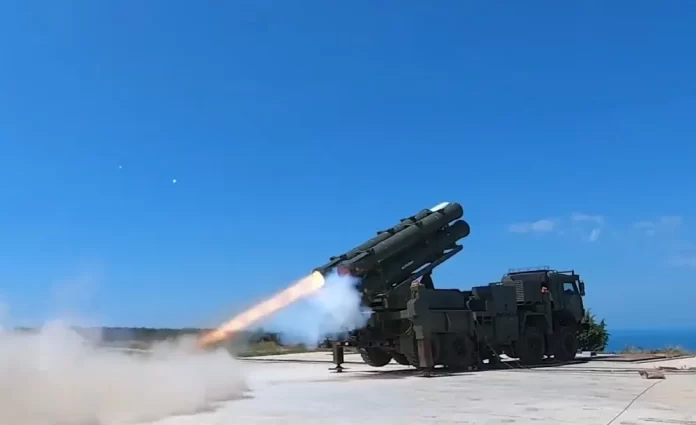Turkish missile manufacturer Roketsan test-fired the land-launched version of its Atmaca anti-ship cruise missile for the first time last week.
The indigenously-developed missile struck a target in the Black Sea after being launched from an 8×8 military truck, a video shared by the Turkish ministry of defense showed.
The missile’s global positioning system, inertial navigation system, barometric altimeter, and radar altimeter steer it toward the target while its active radar seeker enables a precise hit.
Advantage Over Ship-Launched Version
The land-based version of the missile is outfitted with an imaging infrared seeker (IIR) and an image processing function that allows the missile to take out targets positioned near islands and reefs, according to Naval News.
- MBDA Introduces a Long-Range, Ground-Launched Cruise Missile.
- Missile Strike on Crowded Mall in Ukraine Kills 10.
The outlet added that the Radio Frequency-guided, sea-based version lacks this capability, hampering its performance in the Aegean Sea, which features many such structures.
Ship-Launched Version Operational
The missile was first conceived in 2009 to meet the cruise missile requirements of the Turkish Naval Forces. Roketsan began design studies in 2012, and the first test of the sea-based version was conducted in 2019. The missile achieved initial operating capability two years later.
The 800-kg (1,764-lb) missile carries a 250-kg (551-lb) warhead and is powered by the indigenously developed KTJ-3200 engine, the Daily Sabah reported.
Replacement for the Harpoon
The missile can be outfitted on patrol boats, frigates, and corvettes and will replace the Turkish Navy’s Harpoon anti-ship missiles.
Turkey is expected to integrate the missile with corvettes built under the National Ship Project and other vessels and submarines using Harpoon missiles.
Turkish authorities consider the test a first step toward development of a surface-to-surface version called the Kara Atmaca.
The Kara features an IIR seeker and has a range of 280 kilometers (174 miles), around 60 kilometers (37 miles) more than the anti-ship version.





